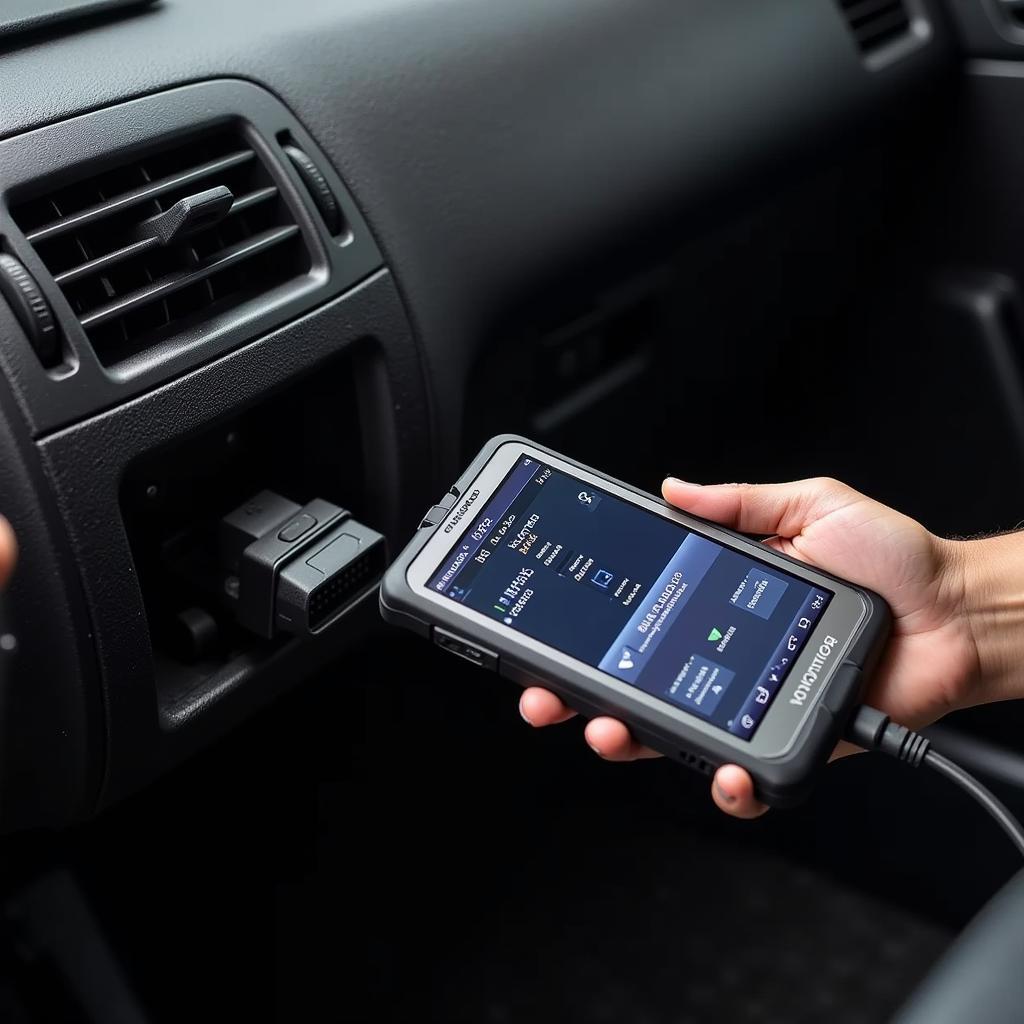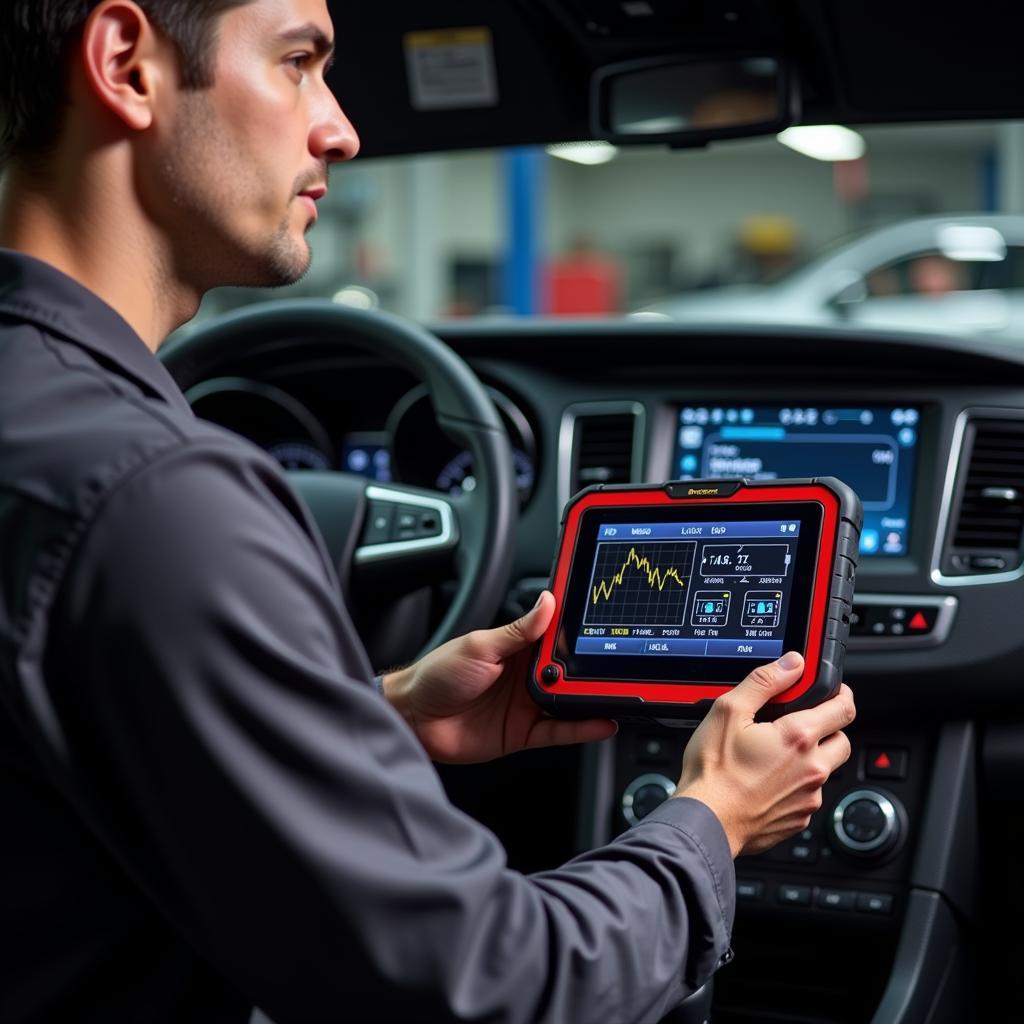Finding the right car diagnostic tool for your computer can feel like navigating a maze. With so many options available, it’s crucial to understand your needs and the features that matter most. Whether you’re a seasoned mechanic or a DIY enthusiast, this comprehensive guide will equip you with the knowledge to make an informed decision.
Why You Need a Car Diagnostic Tool for Computer
Modern vehicles are essentially computers on wheels, with intricate networks of electronic systems controlling everything from engine performance to safety features. When an issue arises, a car diagnostic tool acts as your window into these systems, allowing you to:
- Read and clear fault codes: These codes, often displayed as a series of letters and numbers, pinpoint the source of the problem.
- Monitor live data: Access real-time information from various sensors, giving you insights into your vehicle’s health.
- Perform component activations: Test individual components like actuators and solenoids to diagnose issues.
 Car diagnostic tool connected to a car’s OBD-II port
Car diagnostic tool connected to a car’s OBD-II port
Types of Car Diagnostic Tools for Computers
Choosing the right tool depends on your technical expertise and specific needs. Here’s a breakdown of the most common types:
1. Code Readers
- Best for: Basic diagnostics and clearing simple fault codes.
- Features: Read and clear engine-related fault codes, often offer limited or no live data.
- Affordability: Most budget-friendly option.
2. OBD-II Scanners
- Best for: DIY enthusiasts and those seeking more in-depth diagnostics.
- Features: Read and clear codes from multiple vehicle systems, provide some live data and basic functions.
- Price: Moderately priced, offering a good balance of features.
3. Professional-Grade Scan Tools
- Best for: Professional mechanics and advanced users requiring comprehensive diagnostics.
- Features: Advanced functionalities like bi-directional control, coding, programming, and access to manufacturer-specific data.
- Investment: Significant investment, reflecting the extensive capabilities.
 Mechanic using a professional car diagnostic tool
Mechanic using a professional car diagnostic tool
Factors to Consider When Choosing a Car Diagnostic Tool
Navigating the world of car diagnostic tools involves considering several key factors to ensure you select the one that aligns with your needs and expertise.
1. Vehicle Compatibility
Ensure the tool supports your car’s make, model, and year. Look for tools with wide vehicle coverage, especially if you work on various makes and models.
2. Software Features
Consider the features essential for your needs, such as:
- Code reading and clearing: Fundamental for identifying and resetting fault codes.
- Live data streaming: Essential for monitoring sensor readings and diagnosing issues in real-time.
- Bi-directional control: Allows you to command specific components for testing and diagnostics.
- Special functions: Some tools offer manufacturer-specific functions, like key programming or module coding.
3. User Interface
Opt for a tool with an intuitive interface and easy-to-navigate menus. Consider factors like screen size, button layout, and overall user-friendliness.
4. Updates and Support
Regular software updates are crucial for compatibility with new vehicle models and evolving technologies. Check for tools with readily available updates and responsive customer support.
Connecting Your Car Diagnostic Tool to a Computer
Most modern car diagnostic tools connect to computers, expanding their capabilities and allowing for data analysis, software updates, and more.
- USB Connection: A reliable and widespread connection method for transferring data and updates.
- Wireless Connection (Bluetooth or Wi-Fi): Provides greater flexibility and mobility when working on vehicles.
 Car diagnostic tool software displayed on a laptop
Car diagnostic tool software displayed on a laptop
Tips for Using Your Car Diagnostic Tool Effectively
- Always consult your vehicle’s service manual: Familiarize yourself with your car’s specific systems and procedures.
- Start with a clear understanding of the problem: Note down any symptoms or warning lights before using the tool.
- Record all fault codes and data: This information can be valuable for future diagnostics and repairs.
- Don’t jump to conclusions based solely on codes: Use the tool’s data and your knowledge to diagnose the root cause.
- Regularly update your tool’s software: Ensure compatibility with new vehicle models and access the latest features.
“Investing in a quality car diagnostic tool is crucial for anyone serious about car maintenance and repair,” says John Miller, a seasoned automotive engineer with over 20 years of experience. “It’s your key to understanding your vehicle’s health and resolving issues efficiently.”
Conclusion
Choosing the right Car Diagnostic Tool For Computer-based systems is an important decision for any car enthusiast or professional. By understanding the different types of tools, factors to consider, and connection options, you can confidently select the best one for your needs. Remember to prioritize vehicle compatibility, essential software features, user-friendliness, and reliable support for a seamless diagnostic experience.
Looking for more information about car diagnostic tools? Check out our articles on car diagnostic to laptop and buy diagnostic car scanner.

Leave a Reply